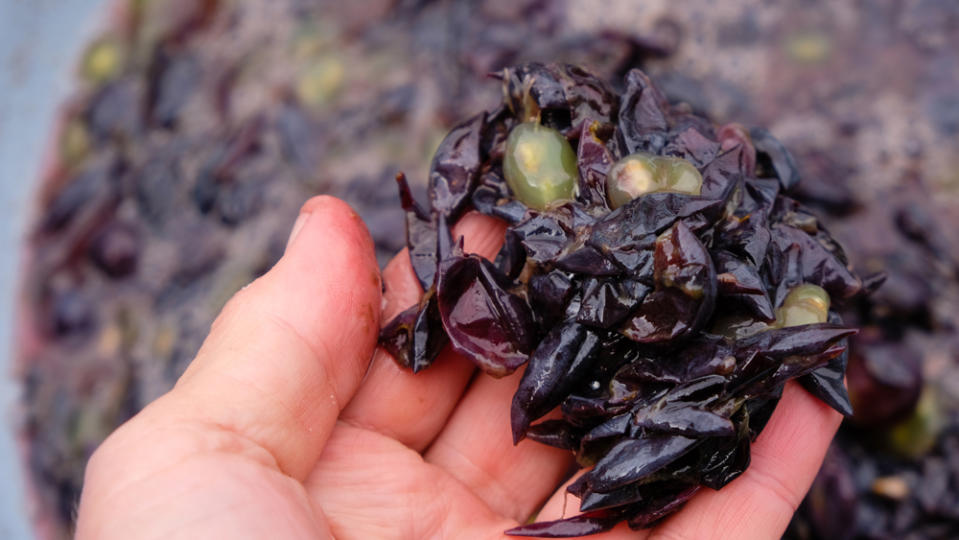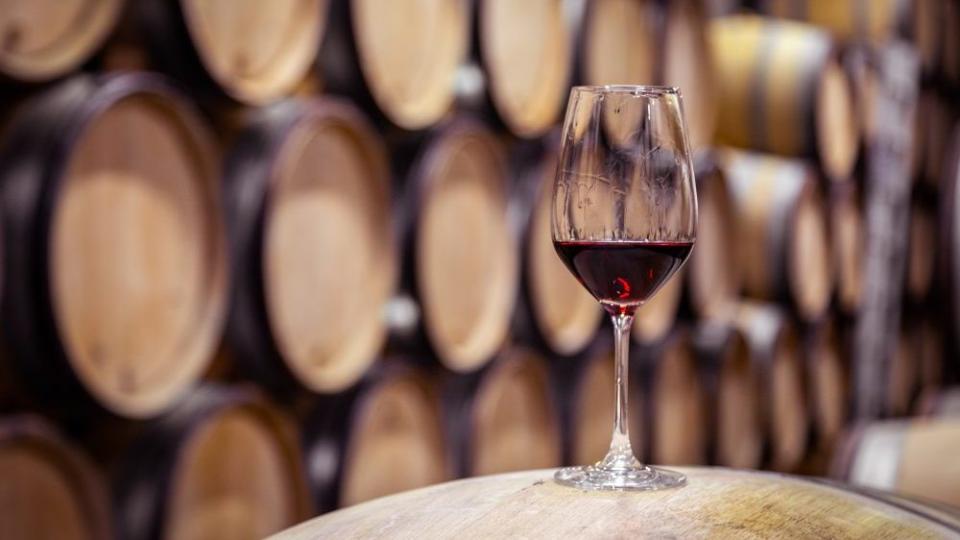How Tannins Really Affect Your Wine, From Taste to Texture

Supple. Velvety. Grippy. Opulent. Smooth. Chewy. Silky. Anyone who has read a wine review or attended a tasting has seen or heard these descriptors and many more, which are usually applied to tannins or tannic structure. Discussions of them are omnipresent, but what exactly are tannins?
While we often hesitate to become overly geeky when describing wine, understanding tannins helps to appreciate how they affect the taste, texture and ageability of our favorite selections. At their most basic, tannins are naturally occurring chemical compounds known as polyphenols that are found in the wood, bark, leaves, fruit, nuts, and seeds of plants and trees. From an evolutionary standpoint, they keep plants safe from animals by giving them a strong, astringent taste, especially before fruit fully ripens. The word tannin has the same root as “tanning” or “tanner,” as these plant-derived compounds were traditionally used to transform animal skins into leather.
More from Robb Report
How Restaurants Finally Learned to Pair Wine With Vegetarian Food
South American Wines Now Rival the Best Napa Vintages. Here Are 3 to Start With.
Tannins are present in many other things we eat, not just in grapes and wine. They are found in tea, coffee, cranberries, blueberries, walnuts, almonds and chocolate, especially dark chocolate with a high percentage of cacao. The tannins’ astringency is responsible for the feeling of dryness and tightness on the tongue, gums and inside of the cheeks that we get when eating any of those foods. The same feeling occurs when drinking red wine, especially one that has strong tannins. Common varieties that have high tannins are Cabernet Sauvignon, Tempranillo, Malbec, Nebbiolo, Merlot and Syrah. Red wines with lower tannins include Pinot Noir, Grenache and Gamay.
Grapes have tannins present in the skins and seeds, so the thicker the skins and the larger the seeds, the more tannins will be present in the finished wine. There are also tannins in grape vines and shoots, so wines that are “whole bunch” or “whole cluster” pressed will have additional tannins. These compounds are also present in wood, so the longer wine is aged in barrels the more tannins the wine will have. Along with alcohol, sulfites and acid, tannins are one of the natural preservatives present in wine.

Old world wine regions such as Rioja and Brunello di Montalcino specify the amount of time that wine must be aged in barrel plus additional time that it must be aged in bottle before release so that the accumulated tannins have time to soften before it can be sold. Other regions, such as Bordeaux, Burgundy and Napa Valley allow wine to be sold to consumers when the winery believes it is ready without any specific aging regulations. This is why bottles from those regions are generally bought young and then laid down in a home cellar or commercial storage facility before drinking.
Over time, tannin molecules recombine and form polymers that fall to the bottom of the bottle. In wines that are unfiltered or lightly filtered, tiny bits of seeds and skins may also be present and will add to the sediment in the bottle. These are all actually re-solidified tannins; in the process of their coming together and “dropping out” of the wine, the wine loses some of its tannic structure and becomes what we describe as smooth.
Tannins that may have been considered chewy, grippy or green in a young wine have now mellowed to the point that we can describe them as plush, velvety or silky. Which brings up an important point: While grippy tannins are not completely undesirable in a young wine—as they may indicate that the wine will mature well (if acidity is present in proper proportion)—in an older bottle strong tannins may indicate that the wine is out of balance and may never develop to the point that it provides a pleasant drinking experience.
Sarah Cuider, senior vice president for winemaking at Foley Family Wines, whose portfolio includes Merus, Kuleto Estate, Chalk Hill and Silverado Vineyards, brought the scientific angle into play when she told us, “It’s about polymerization of anthocyanin.” Explaining how winemakers can fine-tune tannin levels, she added, “Oxygenation during pump overs helps to link the tannins together. You can adjust the tannic level based on winemaking techniques. By tasting during the winemaking process, I know to back off on time and temperature,” to produce a balanced wine.

Alison Rodriguez, who just took over the winemaking helm at Silverado Vineyards, pointed out, “Tannins. . . are really important for longevity. If you want your wines to last for many years you need to have tannins. That’s the first step. In red wines, it’s more about quality than quantity. Tannin is all about texture. Tannin descriptors are all about touch: papery, velvety, silky, rich, round, lacy, chalky. They are all tactile.”
Citing a specific example, Silverado Fantasia from Napa Valley, a blend of Sangiovese and Cabernet Sauvignon, Rodriguez said, “The fine-grained tannins in Sangiovese are like filigree. They have transparency and structure at the same time, like lace. When we move from Sangiovese, which has present but transparent tannins to Cabernet, which has rich tannins that roll around on the palate, we are looking for the marriage of textures.”
Another important zone for the marriage of textures is the mouth, especially when pairing high tannin wines with food. Cabernet Sauvignon, Barolo, Tempranillo or high-end red blends are naturals alongside well-marbled cuts of beef such as ribeye, sirloin or porterhouse. Besides being an excellent taste combination, there’s a scientific explanation for their synergy. The interaction has been described two ways. The first is that the astringency of tannic wine erases most of the fat from our tongue and gums, leaving a more pleasant sensation in the mouth. The other is that the proteins and fat in the beef bind with the tannins and diminish the feeling of dryness on the palate. Either way, we’re here for it.
Best of Robb Report
Why a Heritage Turkey Is the Best Thanksgiving Bird—and How to Get One
The 10 Best Wines to Pair With Steak, From Cabernet to Malbec
Sign up for Robb Report's Newsletter. For the latest news, follow us on Facebook, Twitter, and Instagram.

